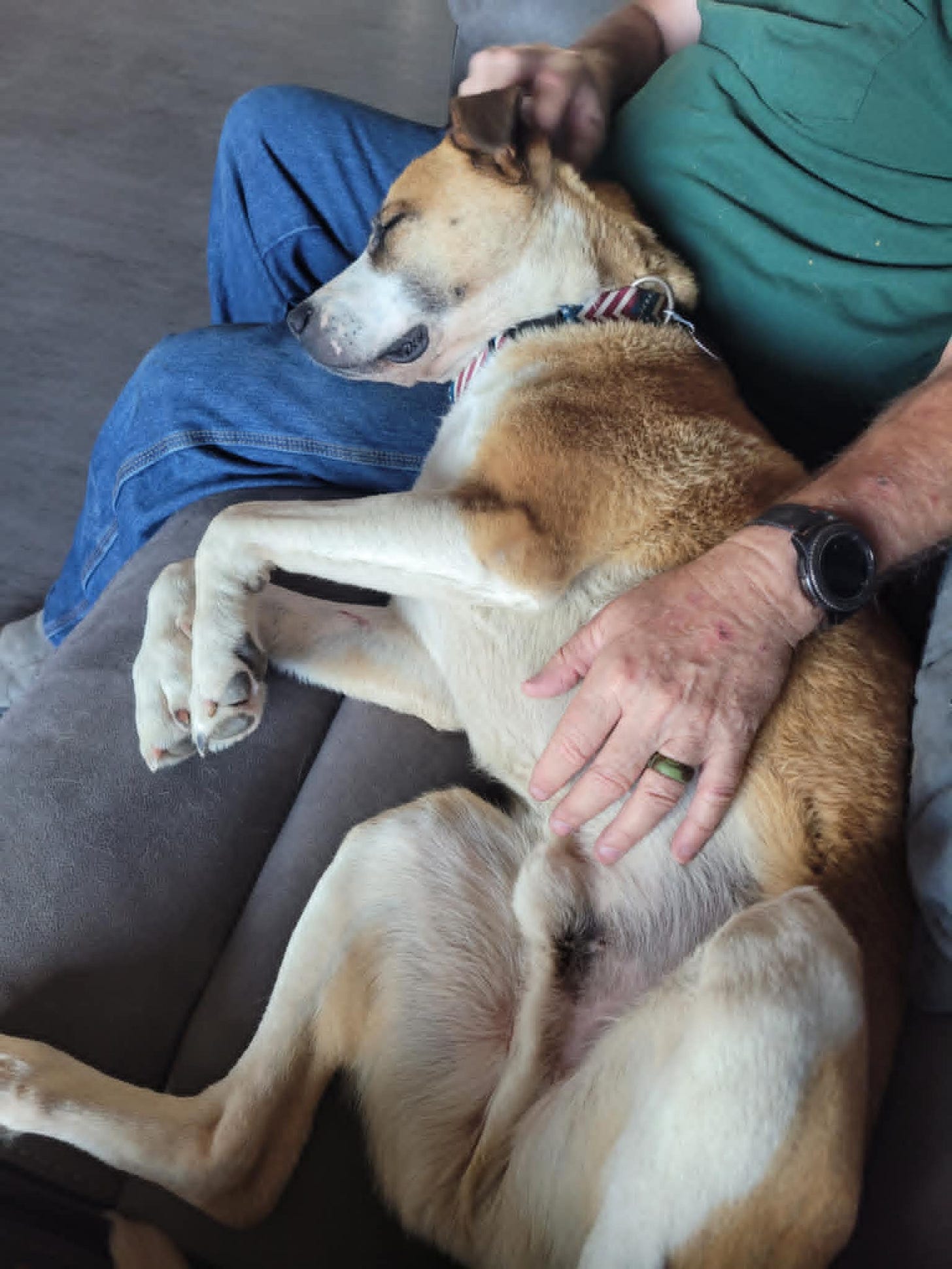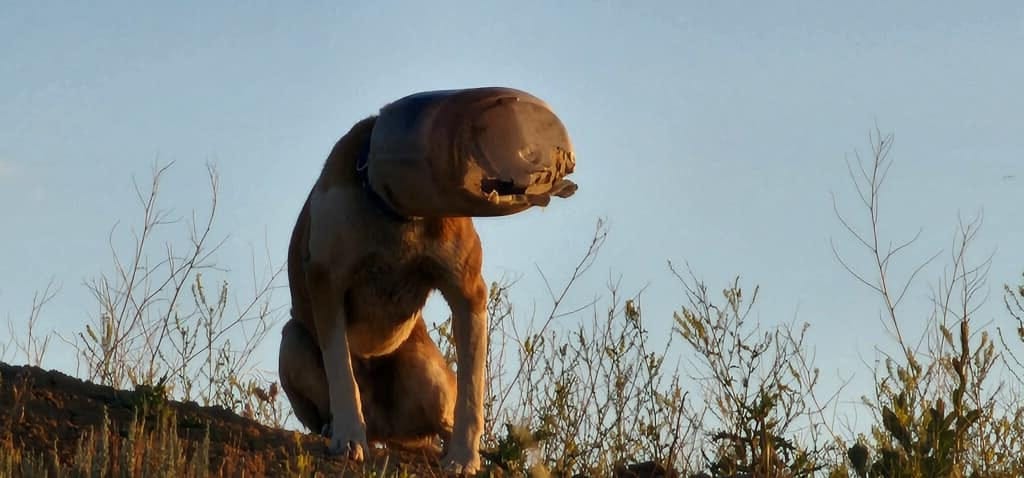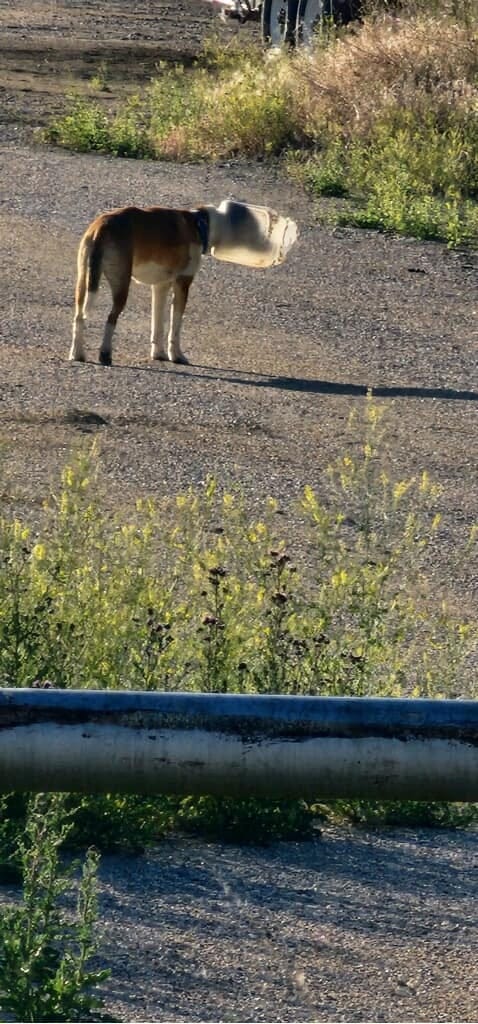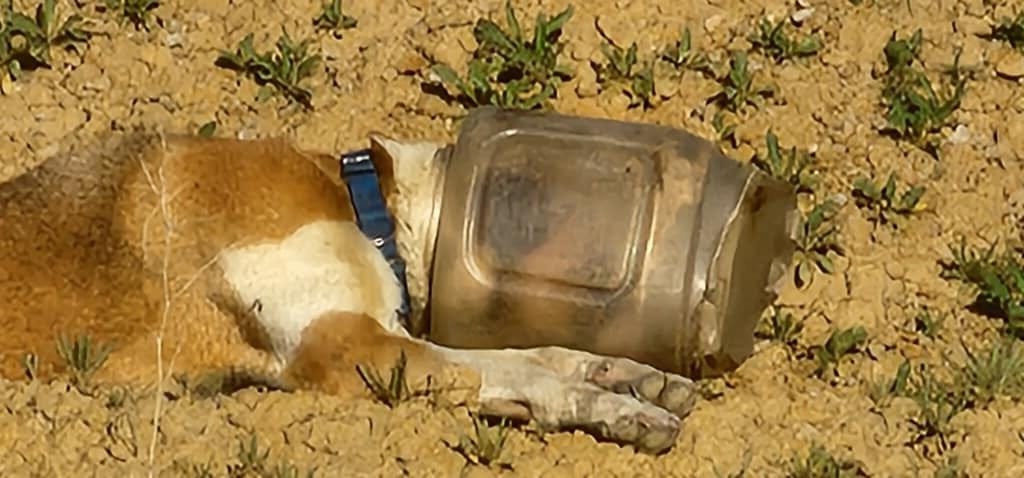“What in the heck IS that?” I asked myself when I first saw the photo of Rocket. I bet that when you first saw this photo, you were wondering the same thing, right?
This is the story about a dog in need. It is a story the reveals the fascinating advancement of dog “rescue” work by dedicated volunteers. This story is about being rescued by LOVE.
Years ago, when you heard the term “dog rescue” within the animal welfare industry, it typically involved volunteer groups and/or lone rescuers who’d adopt dogs from animal shelters, foster, rehabilitate, and then find new forever homes for many dogs (and cats—there are cat rescuers, too) that would’ve been euthanized if not “rescued” from the shelter.
But this is 2024 and, thanks-be-to-God, we not only have those who pull death-row dogs from shelters, but we have many dedicated and highly experienced dog trackers and dog trappers involved in lost pet recovery as well as stray recovery work. Dog trackers are specialized teams of search dog handlers with MAR K9 trailing dogs trained to track lost pets. These trackers (many of which I’ve trained through my online pet detective training courses) offer the same services that I write about in my weekly serialized memoir PET TRACKER—using a trained search dog to track the scent trail of lost dogs and other pets.
Dog trappers, on the other hand, are those who specifically work to recover “stray” dogs, most of which will not readily come up to people and therefore must be humanely “trapped.” Most people who see a skittish, stray dog assume the dog was “abused” because of how fearful it is and that it was abandoned or “dumped.” In reality, many are simply dogs with skittish, fearful temperaments that escaped from a family who never found them and/or could never “catch” their fearful dog and they accidently chased their dog out of their area because they didn’t know how to use Calming Signals to recover their dog. This story is about a dog named Rocket, a rescuer named Shannan Heidrich, and a team of volunteer rescuers in Casper, Wyoming who stepped in to save his life. Rocket was seen running at large for weeks, but on May 10, 2024 he was seen to have a plastic bucket stuck on his head!
BTW, this isn’t the first case I’ve seen where a companion animal had something stuck on their head and needed to be rescued. Ten years ago, in 2014, one of my MAR (missing animal response) Graduate students, Toni Gramiak from Brandon, Manitoba (Canada), helped to humanely trap and rescue a cat named Butterscotch who had a bug trap stuck on his head.
Shannan, an experienced dog trapper, agreed to step in to help Rocket. She did what other ethical dog trappers do and that is to start out by setting up a “feeding station.” This is an area set up with food, water, digital wildlife (“game”) cameras that immediately text photographs to the rescuer of anything (human or animal) that shows up to eat or drink. The goal is to attract the dog to come to a specific area to receive a food and water supply and to hopefully continue to return for more, enabling the rescuer to set up a humane trap to capture the dog.

Shannan posted on Facebook the difficulties her team had with the feeding station that they set up for Rocket:
“He (Rocket) wouldn't go to our feeding station and was traveling about 5 miles one way and then back again each day. We tried setting the feeding station in many different places, all with a camera on them and he only walked by 1 of them 1 time, but he never ate. Each of the feeding stations had deer, magpies and cats eating most of our food within the first hour. Two nights after he walked by the feeding station, my game camera was stolen.”
Rescue is hard work. The majority of these (unpaid) volunteers work fulltime jobs in order to support their “trapping habit,” which is actually a passion to help animals in need. Most invest many, many hours on just one case, working to figure out which bait works best, where to place their feeding station, what type of trap should be used, and how to deal with problems like uncooperative neighbors (who feed the “poor dog” out of pity when the trapper needs the dog to be hungry to enter their trap) or people stealing their cameras or traps. They typically pay for the cameras, traps, bait, and other gear out of their own pocket.
Shannan and her team hung in there and on Sunday July 14, after two months of attempting to entice Rocket to remain at their feeding station, he showed up! And he stayed! Here is what Shannan posted on Facebook:
“Last Sunday, he came to our feeding station and he ATE!!!!! Not only did he eat, but he stayed. He didn't wander far and came back for breakfast, lunch & dinner and then hung out all night. He drank from the wading pool that we put out and even got in it to cool down (Temps were around the 100's). After 2 full days of him returning to the feeding station, we set the Missy trap up and put the feeding station inside it.”

I suppose this is where I should explain what a “Missy trap” is. This ingenious invention, an enclosure trap with an electronic device that is activated when a dog enters the large trap) was created by a clever lost dog recovery team called The Retrievers located in Minnesota. It is an enclosure trap that includes an electronic device activated when a dog enters the trap, triggering the door to close behind the dog. Missy traps are the gold standard in lost/stray dog recovery as they work wonderfully for the dogs who simply will not enter a standard “box” trap used by most Animal Control agencies. Many skittish dogs are fearful of anything over their heads, like you can see takes place in this video here of a dog named Sophie that my team captured back in 2008. We had a “drop net” set up (she was too afraid to enter a box trap and didn’t want anything over her head) and you can see in this video how even that bothered her.
Shannan continued:
“We propped the door open and waited. We weren't sure if he'd go inside it with the bucket on his head. And we weren't sure if the cats would trip it first and spook him. But that night and the next morning he went in & ate again!! The cats also went in and ate but thankfully they weren't able to trip the plate. On July 17th at 7 pm, we set the trap and waited nearby as we watched the cameras. Shortly thereafter, we heard the door Missy Trap door slam shut and checked the cameras and sure enough, he was in! We hustled there—half running and half driving—and got to him within 2 minutes.
He was scared and upset. He growled at us for awhile but I was slowly able to gain his trust. He slowly let me feed him hotdogs and then let me get a slip lead on him. When we had him secured and calm enough, we walked out of the trap together and he let me pick him up to load him in the back of a car. I climbed in with him and he laid his bucket head on my lap. He let me pull the trash out of the bucket (rotisserie chicken bag).”
It took them over 30 minutes for Shannan’s team to slowly cut the bucket off of the dog’s head. They did the right thing in NOT assuming that he was “dumped” like many would assume. Shannon’s team scanned the dog for a microchip and low and behold, he had a chip that was registered! They learned that his name is Rocket. The registered owner said that they had surrendered Rocket to the shelter back in November, where he was adopted out again a month later. It’s unknown for sure, but likely that Rocket escaped from an (unknown) adopter and that he had been out on the run the whole time. The couple who assisted Shannan by restocking the feeding station every day (they live right by where they caught him) are fostering Rocket and plan to adopt him after. As Shannan said in her Facebook post, “It's the best possible outcome.”




Like so many of the great dog trappers out there, Shannan and her team are not yet a part of our Missing Animal Response Network, but we want them to join! However, our online training course is not free and this team doesn’t have the finances ($1,200.00) to train their entire team. If you loved the story of Rocket, please considering making a donation to help this group enroll in our training program and purchase new equipment, cover their gas expenses, and continue their vital work in their community.
To donate to Shannan and her team, go to:








Such determination and perseverence. Thank you to all who stuck in there!
What a lovely story! I still can't figure out the bucket logistics!!! Amazing